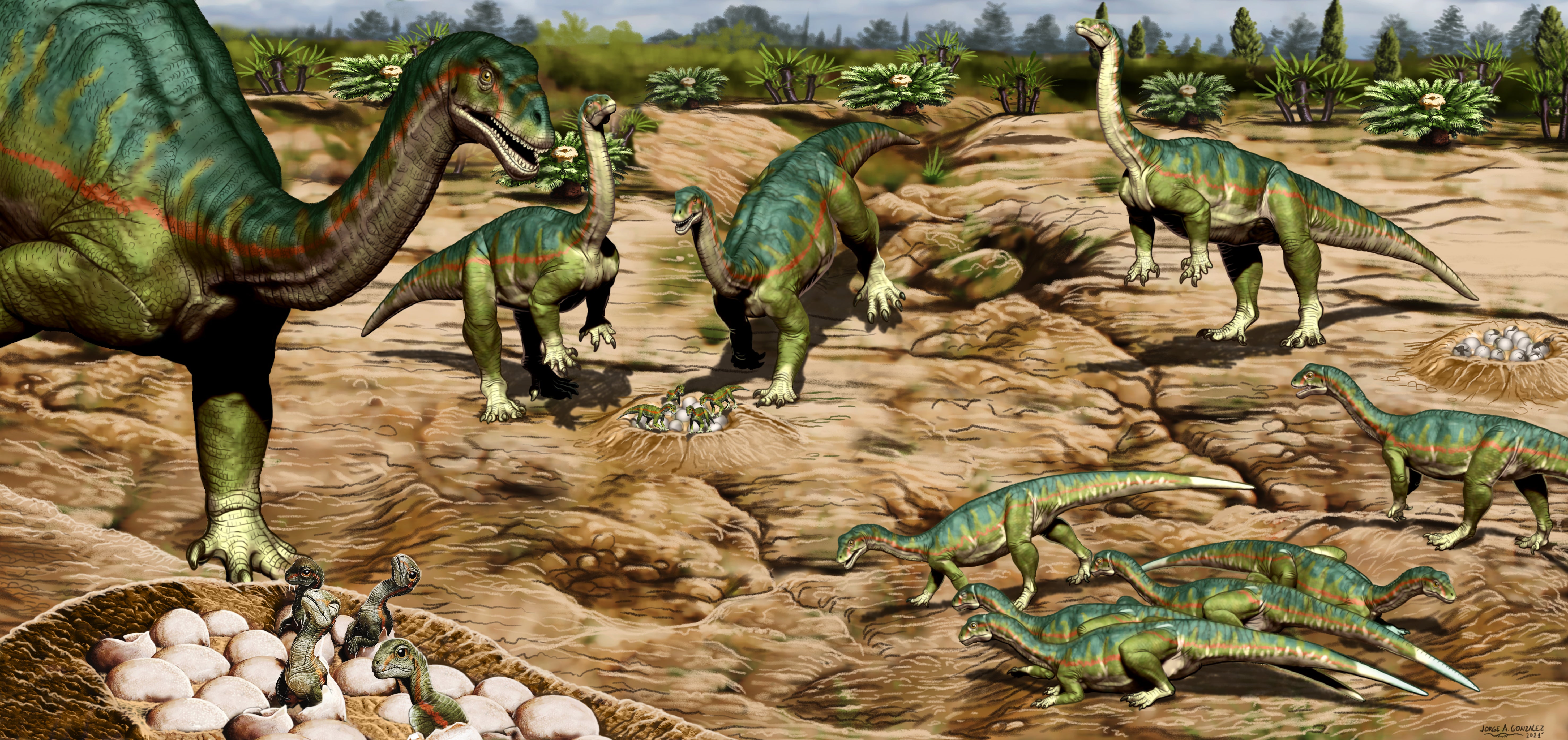Over 100 dinosaur eggs discovered in Argentina
Some shells still contain embryos inside

Your support helps us to tell the story
From reproductive rights to climate change to Big Tech, The Independent is on the ground when the story is developing. Whether it's investigating the financials of Elon Musk's pro-Trump PAC or producing our latest documentary, 'The A Word', which shines a light on the American women fighting for reproductive rights, we know how important it is to parse out the facts from the messaging.
At such a critical moment in US history, we need reporters on the ground. Your donation allows us to keep sending journalists to speak to both sides of the story.
The Independent is trusted by Americans across the entire political spectrum. And unlike many other quality news outlets, we choose not to lock Americans out of our reporting and analysis with paywalls. We believe quality journalism should be available to everyone, paid for by those who can afford it.
Your support makes all the difference.More than 100 eggs have been dug up at a dinosaur graveyard in Argentina providing the world’s first evidence of herd behaviour.
Scans show they belong to the same species - a primitive long necked herbivore called Mussaurus patagonicus.
The shells with the embryos still inside date back 193 million years.
Fossilised bones of 80 juveniles and adults were also dug up at the site in southern Patagonia.
What is more, the remains were grouped by age across an area of about half a square mile on the dry margins of a lake.
Eggs and hatchlings were in one area, adolescents nearby and grown ups scattered throughout - alone or in pairs.
The segregation is typical of a complex, social structure. The dinosaurs worked as a community, laying their eggs in a common nesting ground.
Youngsters congregated in ‘schools,’ while adults roamed and foraged for the herd.
Co author Dr Jahandar Ramezani, a geologist at MIT (Massachusetts Institute of Technology), said: “This may mean the young were not following their parents in a small family structure.
“There’s a larger community structure, where adults shared and took part in raising the whole community.”
The eggs are about the size of a chicken’s. Using state of the art X-ray imaging, the team were able to examine the contents without breaking them apart.
Remarkably, embryos were preserved within which confirmed their identity as Mussaurus patagonicus.
The plant eater reached up to 20 feet long and weighed over a ton. It lived in the early Jurassic and is a member of the sauropodomorphs.
They were the forerunners to Brontosaurus, Diplodocus and other massive sauropods - the biggest animals that ever roamed Earth.
The fossils indicate a communal nesting ground and adults who foraged and took care of the young as a herd.
Dr Ramezani said: “To borrow a line from the movie ‘Jurassic Park’ - dinosaurs do move in herds.
“And they lived in herds 40 million years earlier than the fossil record showed.”
The international team including experts from Argentina and South Africa - have been excavating the ancient sediments since 2013.
Living in herds may have given Mussaurus and other sauropodomorphs an evolutionary advantage, they say,.
The early dinosaurs originated in the late Triassic, shortly before an extinction event wiped out many other animals.
For whatever reason, sauropodomorphs held on and eventually dominated the terrestrial ecosystem in the early Jurassic.
Dr Ramezani said: “We’ve now observed and documented this earliest social behaviour in dinosaurs.
“This raises the question now of whether living in a herd may have had a major role in dinosaurs’ early evolutionary success. This gives us some clues to how dinosaurs evolved.”
Fossils of early sauropodomorphs were first discovered in the Laguna Colorada Formation around 50 years ago.
Scientists named them Mussaurus, which translates as ‘mouse lizard,’ as they assumed they belonged to miniature dinosaurs.
Bigger skeletons were found much later - indicating the large size of Mussaurus adults. But the name stuck.
The bones are in three sedimentary layers spaced closely. The region may have been a common breeding ground.
Dinosaurs would have returned regularly, perhaps to take advantage of favourable seasonal conditions.
One collection of 11 articulated juvenile skeletons intertwined and overlapped each other, as if they had been suddenly thrown together
It is believed this particular herd of Mussaurus died “synchronously” - and were quickly buried.
Dr Ramezani said: “People already knew that in the late Jurassic and Cretaceous, the large herbivore dinosaurs exhibited social behaviour - they lived in herds and had nesting spots.
“But the question has always been, when was the earliest time for such herding behaviour?”
The fossils were precisely dated through chemical analysis of volcanic ash from a distant eruption.
The dinosaurs would have been buried by a flash flood or windblown dust at the same time it was deposited.
The study in Scientific Reports shows Mussaurus and possibly other dinosaurs evolved to live in complex groups around the dawn of the Jurassic.
Two other types of early dinosaurs - Massospondylus from South Africa and Lufengosaurus from China - are also believed to have lived in herds.
The social behaviour may have evolved even earlier, perhaps as far back as their common ancestor, in the late Triassic.
Added Dr Ramezani: “Now we know herding was going on 193 million years ago.
“This is the earliest confirmed evidence of gregarious behaviour in dinosaurs.
“But palaeontological understanding says, if you find social behaviour in this type of dinosaur at this time, it must have originated earlier.”
SWNS
Join our commenting forum
Join thought-provoking conversations, follow other Independent readers and see their replies
Comments